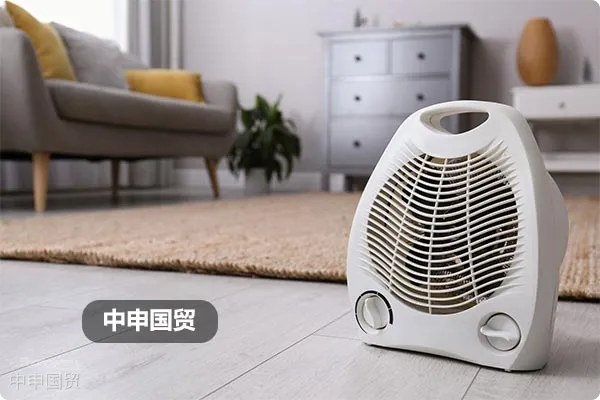- Shanghai Zhongshen International Trade Co., Ltd. - Two decades of trade agency expertise.
- Service Hotline: 139 1787 2118

I. Export Classification and Standardized Declaration
When exporting plug-in heaters, the first step is export classification and standardized declaration. This is because for any export product, correct classification and declaration are the foundation for smooth customs clearance.
Export Classification:The HS code for exporting plug-in heaters is 8516.29. This is an internationally unified system for product classification and coding, widely used in customs supervision, statistics, and taxation. The correct HS code ensures smooth customs clearance and helps avoid additional taxes or penalties due to incorrect classification.
Standardized Declaration Elements:During declaration, detailed information about the product must be provided, including brand type, export preferential treatment, usage, working method (e.g., storage, radiant, convection), brand, model, GTIN, CAS, etc. GTIN is the Global Trade Item Number, which uniquely identifies a trade item globally; CAS is the Chemical Abstracts Service number, used to uniquely identify chemicals.
Declaration Process:First, manufacturers or exporters must ensure all declaration information is accurate and complete. Then, the declaration information must be submitted via the Electronic Data Interchange System (EDIS) or other applicable customs systems. After submission, customs will review the information. If the declaration meets requirements, customs will issue a release notice, and the goods can be shipped. If the declaration does not meet requirements, customs will request modifications or additional information.
Declaration Notes: During declaration, the accuracy and authenticity of all information must be ensured. Any false or misleading information may result in goods being detained or even legal penalties. Additionally, the timeliness of declaration must be noted to avoid delays affecting shipment and delivery.
II.for containers exported to the USCertification Requirements
For plug-in heaters exported to the U.S., a series of certification requirements must be met. These certifications mainly involve product safety and electromagnetic compatibility to ensure the product does not pose a threat to consumer safety and health or interfere with other electronic devices.
UL certification: UL is the abbreviation for Underwriters Laboratories Inc., the most authoritative safety testing and certification organization in the United States. Heaters need to be tested and certified according to the UL1278 standard. The UL1278 standard covers leakage current tests, temperature rise tests, endurance tests, short-circuit tests, overload tests, component failure tests, dielectric withstand voltage tests, insulation resistance tests, stability tests for portable heaters, and other aspects.
FCC certification: FCC stands for the Federal Communications Commission. All radio application products, communication products, and digital products entering the U.S. market require FCC certification. Heaters must undergo electromagnetic compatibility testing and certification according to FCC certification 47 CFR Part 15B.
New UL1278 Standard:In 2022, the UL1278 standard was revised. The new version updated requirements for product warning labels, instruction manuals, and power cord labels, adding overheating warnings and other requirements. Exporters need to promptly monitor and address these changes to ensure products comply with the latest standard requirements.
III. U.S. Customs Clearance Requirements
Plug-in heaters exported to the U.S. have specific requirements for customs clearance. These requirements mainly involve product safety, compliance, and integrity.
Customs Clearance Certificates:For heaters with HS code 8516.29, there are no mandatory certification requirements during customs clearance. However, this doesnt mean certificates can be ignored. In practice, relevant certifications such as UL certification and FCC certification can serve as strong proof of product quality and safety, facilitating smooth customs clearance.
Customs Clearance Process: The customs clearance process mainly includes steps such as declaration, inspection, tax calculation and payment, and release. During this process, exporters need to maintain good communication with customs, providing all required information and documents to ensure smooth clearance of goods.
Customs clearance considerations:During customs clearance, exporters must ensure the accuracy and completeness of all provided information and documents. Any errors or omissions may lead to goods being detained or even facing legal penalties. Additionally, it is crucial to pay all applicable taxes to avoid additional fines or interest.
Related Recommendations
? 2025. All Rights Reserved. Shanghai ICP No. 2023007705-2  PSB Record: Shanghai No.31011502009912
PSB Record: Shanghai No.31011502009912










